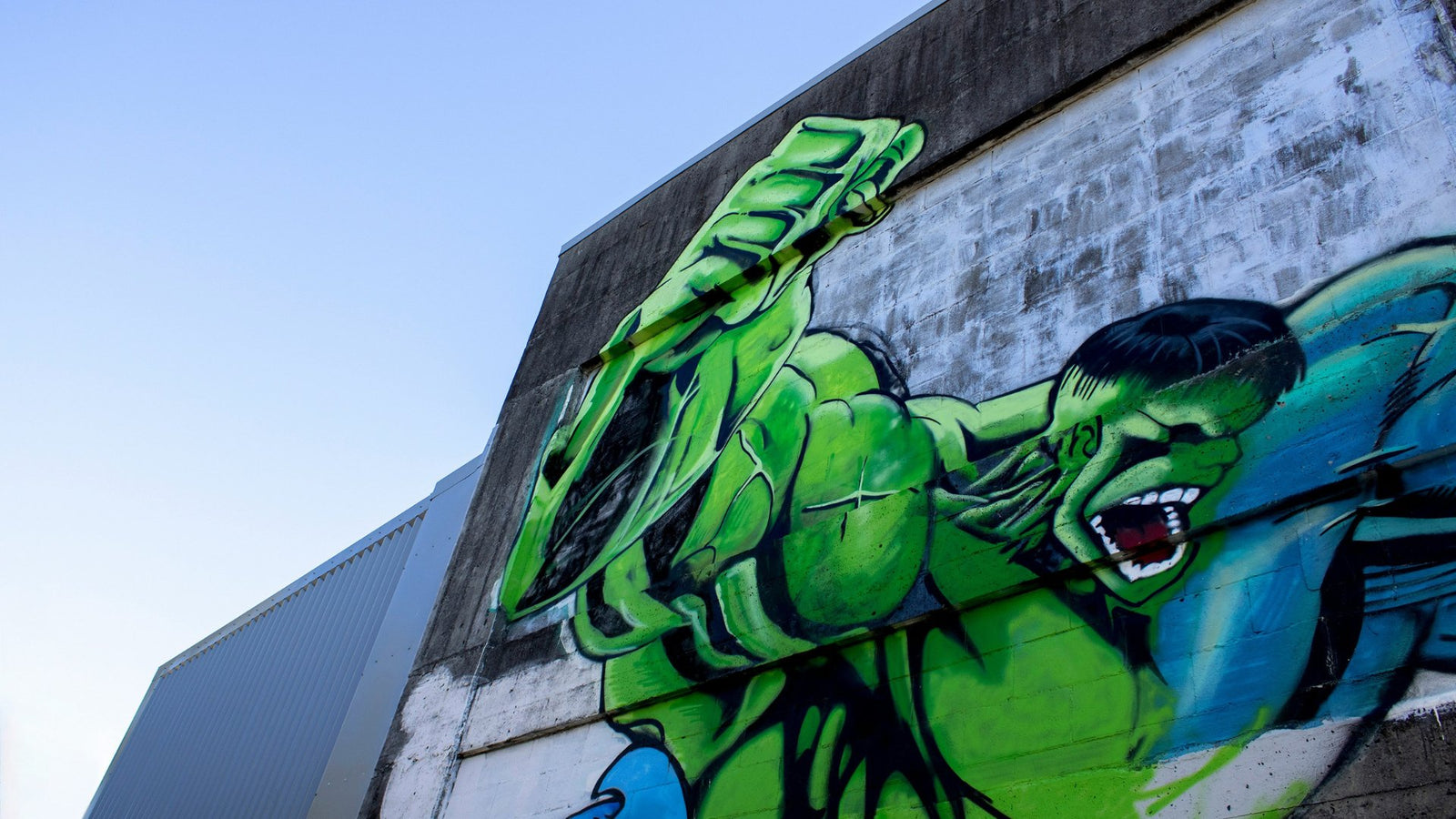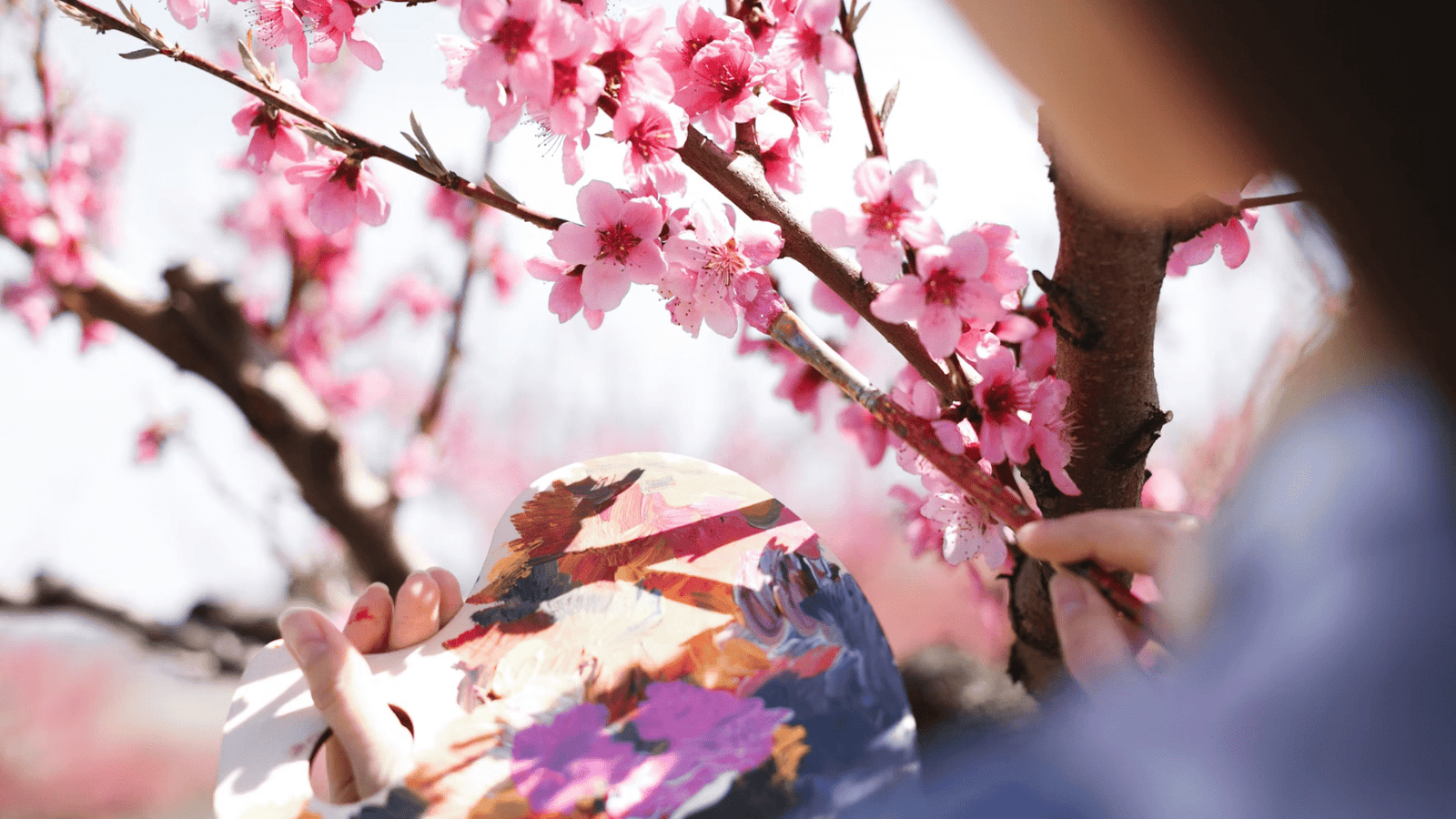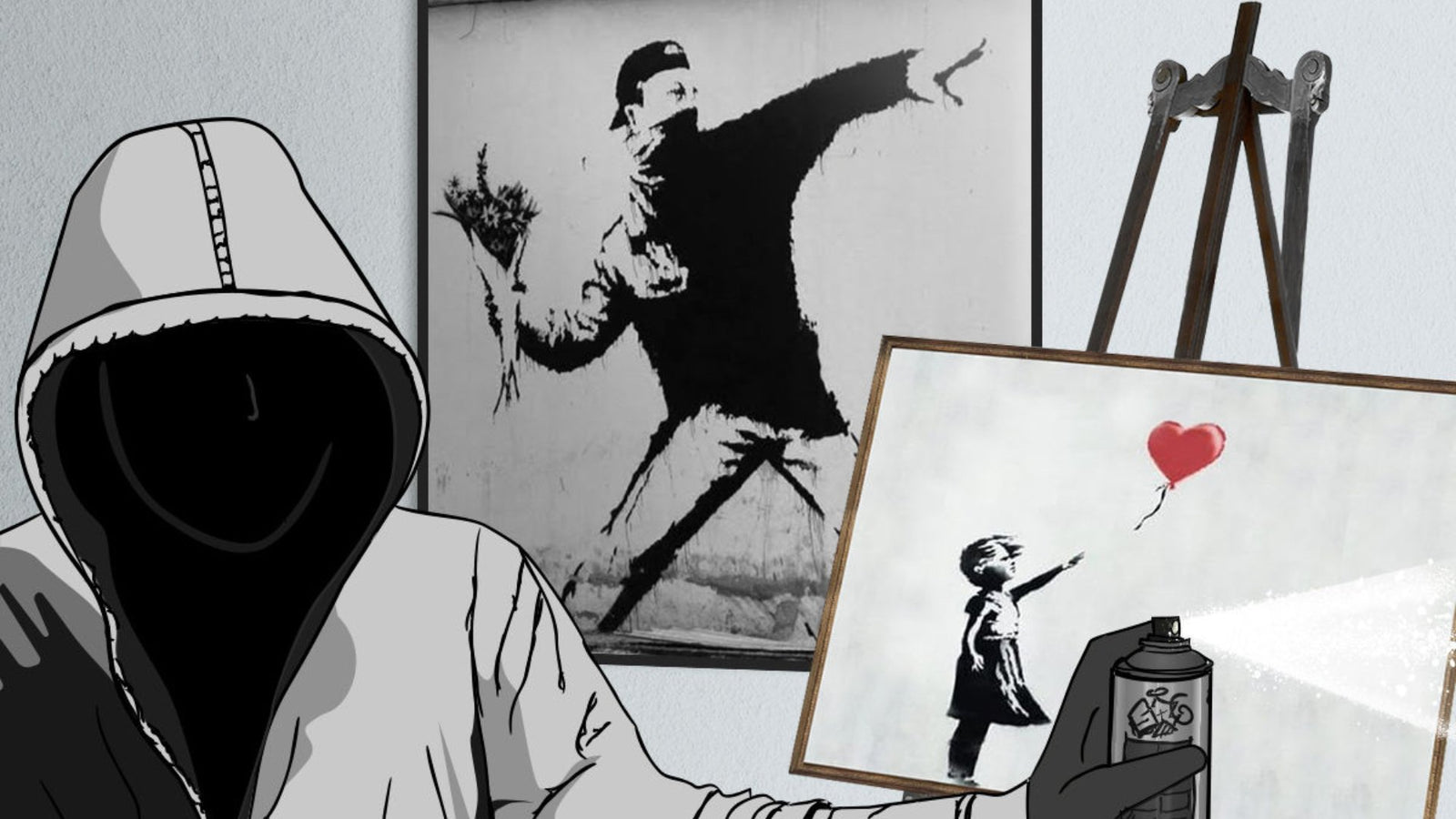Your Cart is Empty
🎁BUY 2, GET 1 FREE + FREE WORLDWIDE SHIPPING 🚚
🎁BUY 2, GET 1 FREE + FREE WORLDWIDE SHIPPING 🚚
The Influence of Pop Culture on Modern Art Movements
11 min read

Pop culture and modern art are closely connected, each shaping and reflecting the other in dynamic ways, influenced by consumerism and mass media.
From the vibrant visuals of Pop Art to the rebellious spirit of Street Art, contemporary artists often draw inspiration from the cultural zeitgeist around them, utilizing cultural commentary and everyday imagery.
This relationship isn’t without controversies—questions about commercialization and authenticity arise as pop culture continues to influence artistic expression.
Explore how these two worlds collide and evolve, and what the future holds for their ongoing interplay, especially through the lens of different art movements such as British Pop Art and American Pop Art.
The Relationship Between Pop Culture and Modern Art
.jpg_00.jpeg)
The intricate relationship between Pop Culture and Modern Art is deeply rooted in the artistic aims that reflect the complexities of modern life, as artists utilize everyday imagery and cultural commentary to critique and celebrate the phenomena of consumerism and mass media.
This interplay is evident in the works of key artists from the Independent Group, such as Richard Hamilton, who laid foundational aspects of Pop Art history. This relationship is notably exemplified in movements like British Pop Art and American Pop Art, which have redefined visual culture through the incorporation of iconic works from key artists such as Andy Warhol and Roy Lichtenstein. Both movements have successfully melded pop culture elements into their artistic practices, leading to transformative representations of modern society and its values, often using cultural symbolism and a visual lexicon that resonates deeply with audiences.
How Has Pop Culture Shaped Modern Art?
Pop culture has significantly shaped modern art by infusing it with elements of mass media and consumerism, leading to a radical transformation in artistic techniques and the representation of everyday objects. This has also contributed to the popularity of celebrity culture within art.This evolution is particularly evident in the works of artists who draw inspiration from the visual language of advertising and popular entertainment. For instance, the use of vibrant imagery is not just a stylistic choice but a method to capture the dynamic essence of contemporary life.
Artists like Andy Warhol famously embraced consumer goods, elevating mundane objects to high art and prompting a reconceptualization of value. Humor often finds its way into these pieces, inviting viewers to engage with serious themes through a playful lens, such as in Warhol's depiction of Campbells Soup and Marilyn Monroe.
- Mass media has introduced a new level of accessibility, allowing artists to reach a broader audience.
- The intersection of art and technology, fueled by digital platforms, has democratized the art world, enhancing the accessibility and reach of modern artistic expressions.
- Ultimately, the influence of pop culture fosters a dialogue between art and society, reflecting and critiquing the rapidly shifting cultural landscape.
How Has Modern Art Reflected Pop Culture?
Modern art has served as a mirror reflecting the nuances of pop culture, capturing the essence of artistic rebellion and nostalgia while employing a visual lexicon that resonates with contemporary audiences, often challenging viewers to reconsider their everyday experiences and the imagery that surrounds them.
This is particularly evident in the works of American artists like Jasper Johns and Robert Rauschenberg, who incorporated elements of mass media and consumerism into their art. This genre has not only embraced but also dissected popular symbols and icons, transforming commonplace objects into profound statements that engage with societal expectations and aspirations.
Artists like Claes Oldenburg, David Hockney, and Ed Ruscha have employed cultural symbolism and humor to explore the mundane aspects of life, elevating them to a status worthy of artistic contemplation. For instance:
- Claes Oldenburg is renowned for his larger-than-life sculptures of everyday items, such as giant hamburgers and lipsticks, which humorously critique consumerism and excess, akin to the generational connection found in pop art history.
- Ed Ruscha, on the other hand, often incorporates text and imagery derived from urban environments, capturing the essence of American culture through a minimalist lens.
Both artists exemplify how modern art can navigate the intersections of culture and commentary, inviting audiences to engage with the familiar in unexpected ways, turning observations into a visual dialogue about identity, society, and the often-overlooked aspects of modern life.
The Impact of Pop Culture on Specific Modern Art Movements
This impact spans several notable art movements, such as Abstract Expressionism, where pop culture elements began to surface, merging traditional techniques with contemporary themes.
.jpg_01.jpeg)
The impact of pop culture on specific modern art movements, such as Pop Art, Street Art, Digital Art, and Performance Art, is profound, shaping their development through themes of consumerism and the incorporation of contemporary visual culture.
Pop Art
Pop Art emerged as a distinctive art movement in the mid-20th century, characterized by its bold colors, vibrant imagery, and the use of mass production techniques to create iconic imagery that resonates with the public.This innovative movement can be traced back to the post-World War II era, where artists began to explore the relationship between art and consumer culture. Prominent figures, such as Andy Warhol, Roy Lichtenstein, and Richard Hamilton, played pivotal roles in its development, incorporating elements of advertising and popular culture into their works. Their techniques often included mass production and comic strips, challenging traditional artistic standards.
Warhol’s famous Campbell’s Soup Cans and Lichtenstein’s comic strip-inspired paintings exemplify how everyday objects and cultural symbols were transformed into art. By embracing the aesthetics of consumerism and mass media, artists sought to challenge traditional art standards and question the boundaries of creativity.
This blending of high and low culture not only redefined the art world but also reflected societal changes in perception of value and taste.
- Key Aspects of Pop Art:
- Bold colors and graphic imagery
- Utilization of everyday objects
- Challenges to traditional art values
Street Art
Street Art has become a powerful form of expression within pop culture, often serving as a medium for artistic rebellion against consumerism and societal norms, while enriching the visual culture of urban environments.This dynamic art form not only transforms ordinary cityscapes but also offers a voice to marginalized communities, enabling them to convey messages that resonate on a global scale. Artists such as Banksy, Basquiat, and Shepard Fairey have significantly impacted this vibrant movement, each utilizing unique styles to challenge the status quo and provoke thought. Their works often feature social commentary and political themes, inviting viewers to reconsider their surroundings.
- Banksy: Renowned for his satirical representations, his graffiti often raises questions about war and consumerism.
- Basquiat: Merging graffiti with fine art, he highlighted race and identity through vibrant imagery.
- Shepard Fairey: Creator of the iconic 'Hope' poster, he integrates activism with aesthetic appeal.
Through various styles and techniques, street art continues to evolve, breaking down barriers between traditional and contemporary expressions, making it an essential component of modern culture.
Digital Art
.jpg_10.jpeg)
Digital Art represents a groundbreaking fusion of technology and art, allowing artists to explore new mediums and techniques that are deeply influenced by pop culture and mass media.
This innovative form of artistry not only broadens the scope of creative expression but also challenges traditional views of art, compelling artists to engage with contemporary issues through their work. Digital artists leverage software tools, including graphic design programs and animation software, enabling them to manipulate images and sounds in ways previously unimaginable.
As they immerse themselves in the digital landscape, these creators often draw inspiration from various forms of modern culture, such as:
- Music and its visual representations
- Social media trends and memes
- Film and television aesthetics
Through this lens, digital art serves as a potent vehicle for social critique, allowing creators to comment on and reflect the complexities of modern life, ultimately transforming how art is perceived and appreciated in today’s society.
Performance Art
Performance Art has emerged as a dynamic form of artistic expression, drawing heavily from pop culture to comment on societal issues and evoke nostalgia among audiences, creating a unique experience that transcends traditional art forms and invites spectators to become active participants in the unfolding narrative.
This intriguing medium harnesses various elements of visual art, theater, and music, intertwining them to challenge perceptions and provoke meaningful dialogue. Performance Art offers a fresh lens through which to view the complexities of modern life, often utilizing familiar cultural references that resonate deeply with diverse audiences. Artists like Marina Abramović and her iconic work, The Artist Is Present, exemplify the power of this genre to foster connection and reflection.
- Performance as social commentary
- Integration of technology and multimedia
- Incorporation of audience interaction
Through these engaging practices, such artists successfully stimulate critical thinking and emotional engagement, ensuring that the art form remains relevant in an ever-evolving cultural landscape, often aligning with sociological analysis and shifting aesthetic values.
The Controversy Surrounding Pop Culture's Influence on Modern Art
As pop culture continues to leave its mark on modern art, debates arise over the transformation of traditional artistic values. Critics argue whether the integration of pop culture dilutes the essence of art or makes it more relevant to contemporary society.
The influence of pop culture on modern art has sparked significant controversy, leading to debates about whether this trend dilutes artistic standards or enhances the relevance of art in contemporary society.
Is Pop Culture Diluting the Value of Modern Art?
.jpg_11.jpeg)
Critics argue that the infusion of pop culture into modern art could lead to a dilution of artistic value, as consumerism and commercial interests begin to overshadow deeper cultural symbolism.
This concern raises important questions about the essence of artistic expression and its intersections with prevalent trends. For instance, the rise of street art places accessibility at the forefront, inviting a broader audience to engage with art in ways previously reserved for the elite. The influence of Pop Art, particularly British Pop Art and American Pop Art, has played a significant role in these transformations.
- Examples: Banksy's provocative works often incorporate pop culture references, raising political and social issues. Similarly, artists like Andy Warhol and Roy Lichtenstein have used pop culture to create iconic works.
- Counterarguments highlight that such intertwining might enhance relevance, allowing artists to connect with contemporary audiences more effectively.
- Some suggest that rather than diluting, this fusion creates new dimensions that challenge traditional art forms.
Ultimately, the discourse reflects deeper societal attitudes towards art and its role in cultural commentary.
Is Modern Art Becoming Too Commercialized?
The commercialization of modern art raises concerns that the integrity of artistic expression is compromised in favor of catering to pop culture trends and consumer demands.As the art world increasingly intertwines with industry, many artists find themselves torn between their creative visions and the financial pressures that accompany commercial success. This duality leads to complex decisions where the fine line between artistry and commerce often blurs, much like the era of Abstract Expressionism when artists like Jasper Johns and Robert Rauschenberg navigated similar challenges.
- Stakeholders, including gallery owners, art collectors, and critics, typically have divergent views on the changes that come with commercialization.
- Some argue that it democratizes art, making it more accessible to the general public.
- Conversely, others express concern that it dilutes the cultural significance of the art.
This tension is not only evident in the works produced but also impacts how artists market themselves, navigate financial uncertainties, and define creative boundaries.
The Future of Pop Culture and Modern Art
The future of pop culture and modern art is poised for significant evolution, driven by technological advancements and the continuous interplay between artistic innovation and contemporary cultural trends.
How Will Pop Culture Continue to Shape Modern Art?
Pop culture will undoubtedly continue to shape modern art by evolving artistic techniques and expanding the visual culture, fostering new forms of expression that resonate with diverse audiences.As the landscape of entertainment and media evolves, artists will likely draw inspiration from various facets of pop culture—everything from social media trends to blockbuster films. This ongoing dialogue not only influences aesthetic choices but also prompts a deeper exploration of themes such as identity, technology, and societal issues.
For instance, artists may leverage groundbreaking technologies like virtual reality and augmented reality to create immersive experiences that invite interaction and reflection. The blending of traditional techniques with contemporary elements may result in unique styles that reflect modern sensibilities.
Modern artistry will thus embody a synthesis of past and present, ultimately crafting a richer narrative that mirrors the complexity of today’s world.
- Exploration of identity through mixed media.
- Incorporation of digital platforms for art dissemination.
- Thematic focus on social justice and climate change.
How Will Modern Art Continue to Reflect Pop Culture?
Modern art will continue to reflect pop culture by serving as a lens through which cultural commentary and artistic expression converge, often evoking nostalgia and challenging societal norms.As contemporary artists draw inspiration from the vibrant tapestry of modern life, they will undoubtedly harness dynamic themes such as identity, technology, and consumerism, further bridging the gap between art and everyday experiences. This integration could involve:
- Interactive installations: Art that invites public engagement to foster a collaborative dialogue and spark connections among viewers.
- Digital mediums: Utilizing social media platforms and virtual reality to create immersive experiences that reflect the digital age.
- Political commentary: Addressing pressing social issues, like climate change and inequality, through thought-provoking visual narratives.
As these trends unfold, it will become increasingly clear that modern art remains not just a reflection of pop culture, but a vital component in shaping its future.
Frequently Asked Questions
What is the relationship between pop culture and modern art movements?
The influence of pop culture on modern art movements can be seen in the way that artists use elements of popular culture, such as advertising, music, and film, in their work. This can be through direct references or by incorporating techniques and styles from popular media into their artwork.
How has pop culture influenced the subject matter of modern art movements?
The subject matter of modern art has been greatly influenced by pop culture. Artists often incorporate common themes and symbols from pop culture, such as celebrities, consumerism, and mass media, into their work to comment on society and challenge traditional ideas of art.
What impact has pop culture had on the techniques and styles of modern art movements?
Pop culture has had a significant impact on the techniques and styles used in modern art. Artists have adopted techniques from popular media, such as collage and screen printing, and have also been influenced by the bold and vibrant designs found in advertising and graphic design.
How has the rise of social media affected modern art movements?
The rise of social media has greatly influenced modern art movements. Artists now have a platform to share their work instantly with a global audience, and many have utilized social media as a medium for their art. Social media has also allowed for a democratization of art, with online platforms enabling artists to sell their work directly to consumers without traditional gallery representation. This phenomenon mirrors the earlier impact of artists like David Hockney and Ed Ruscha, who similarly broke new ground in how art could be shared and consumed.
What are some examples of modern art movements that have been influenced by pop culture?
Some examples of modern art movements that have been influenced by pop culture include Pop Art, Street Art, and Neo-Pop. Pop Art, which emerged in the 1950s, was heavily inspired by consumer culture and popular media, with American Pop Art icons like Andy Warhol and Roy Lichtenstein creating works such as "Campbells Soup" and "Marilyn Monroe." Street Art, which gained popularity in the 1980s, often incorporates elements of popular culture and has become a global phenomenon through social media. Neo-Pop, a contemporary art movement, utilizes popular imagery and references to critique consumerism and mass media.
How has the influence of pop culture on modern art movements evolved over time?
The influence of pop culture on modern art movements has evolved over time. In the early 20th century, artists like Marcel Duchamp and Andy Warhol began incorporating popular culture into their work, challenging traditional notions of high art. This was furthered by British artists at the Whitechapel Gallery and American culture icons such as The Beatles and James Dean. As technology and media have advanced, pop culture has become increasingly present in our daily lives, leading to a more significant impact on modern art movements.



